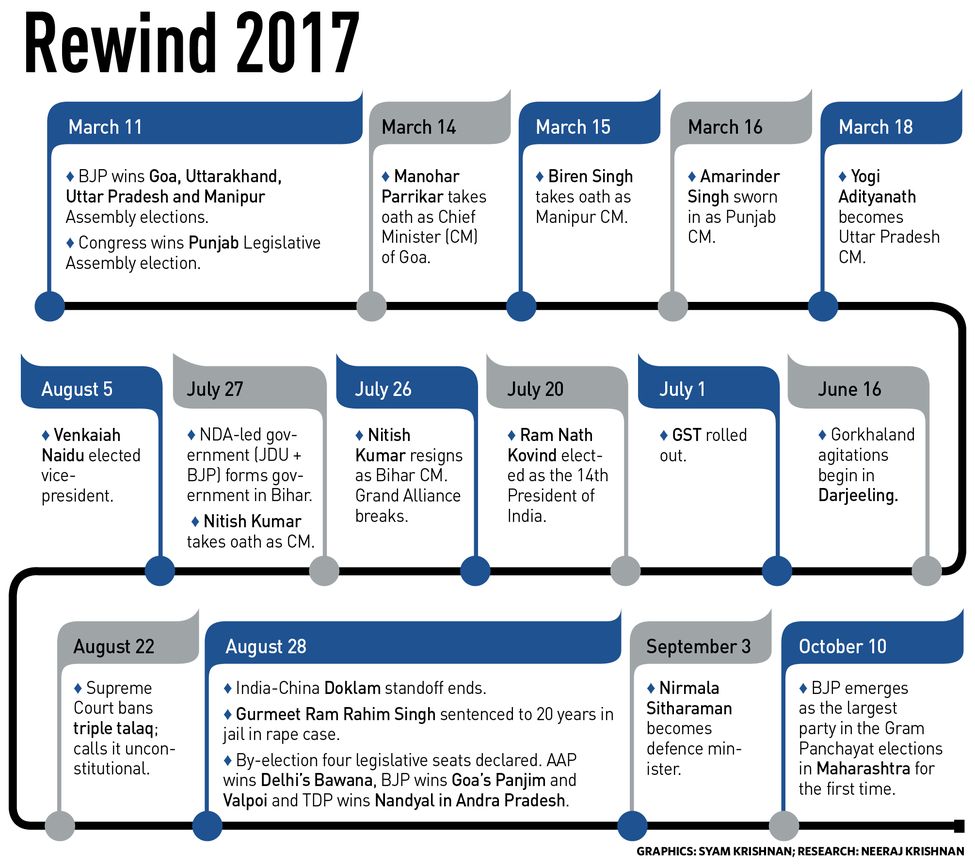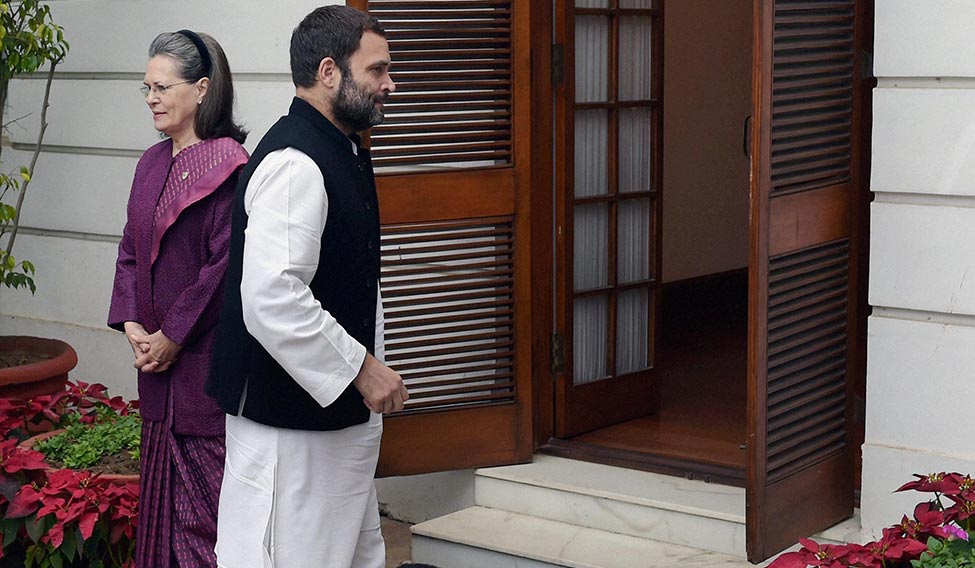Confidence, a hallmark of the National Democratic Alliance government, appears to have ceded some space to self-doubt. Just one and a half years before the next Lok Sabha elections, the Narendra Modi regime is feeling the heat.
Opposition leaders recall the supreme confidence of the Modi government at meetings of the GST council not so long ago. They claim that the government stood firm on the modalities of the new tax regime and was not amenable to suggestions from finance ministers of opposition-ruled states. However, more recently, the government has listened to the concerns of the state ministers. Subsequently, in a major climb down, the government cut down the tax rate on 150 items under the new Goods and Services Tax regime.
When opposition parties began attacking the government over the impact of of the note ban and a ‘faulty’ GST, voices from within the BJP felt emboldened to ask questions. Senior BJP leader and former finance minister Yashwant Sinha openly said the economy had been messed up because of demonetisation (which he called an “unmitigated economic disaster”), hasty roll-out of a flawed GST, and the government’s inability to get big loan defaulters to pay.
A finance minister from a Congress-ruled state joked that the government was finally listening to the states on GST, thanks to the assembly election in Gujarat, a state where businessmen and traders are an influential constituency. However, the political import of the economic issues in election season was certainly not lost on the government, just as the opposition knew that the situation presented it with a golden opportunity to corner Modi and the BJP.
As the Congress carried out a spirited campaign under Rahul Gandhi, raising the impact of the economic decisions, especially on small- and medium-scale businesses, connecting it directly to loss of jobs, it became clear that the course of attack on the government had changed. The attack was no longer based on the alleged communal agenda of the right-wing forces. The Congress took up issues of development, such as unaffordable health care and education. It spoke of inequity of development under the Gujarat model. The change of tactics was seen in Gujarat, where the Congress, while campaigning, did not mention the 2002 communal riots.
 Mr Disruptor: Narendra Modi speaking at the foundation day of the Institute of Chartered Accountants of India in New Delhi | PTI
Mr Disruptor: Narendra Modi speaking at the foundation day of the Institute of Chartered Accountants of India in New Delhi | PTI
For the first time since it was sworn in, the Modi government is reacting, rather than deciding the course of the political narrative. Having come to power in 2014 riding on the ‘Vikas mantra’ and carefully keeping off the hindutva sentiment, Modi is now, rather ironically, being asked questions on development.
If the major concessions announced under GST were a sign of the government feeling the pressure, the decision to roll back petrol prices showed that it was on the back foot. Earlier, its decision to infuse Rs 2.11 lakh crore into public sector banks was seen as the government’s admission of the country’s economy not doing too well. The opposition parties have also attacked the government for deliberately delaying the start of the winter session of Parliament as it was aware that it had a lot of answering to do.
When Rahul spoke at the University of California, Berkeley, in September, outlining the blueprint of his party’s attack on Modi in the run-up to the Lok Sabha elections, it was forcefully countered by a line-up of cabinet ministers, with Information and Broadcasting Minister Smriti Irani leading the charge. Irani rubbished Rahul as a ‘failed dynast’, conveying that he need not be taken seriously. However, the scale of the BJP’s reaction showed that they had taken Rahul’s criticism very seriously and that he had hit the party where it hurt.
While the government is under pressure, the opposition has found a spring in its step. Modi suddenly looks assailable. And, the opposition has launched a coordinated offensive against him.
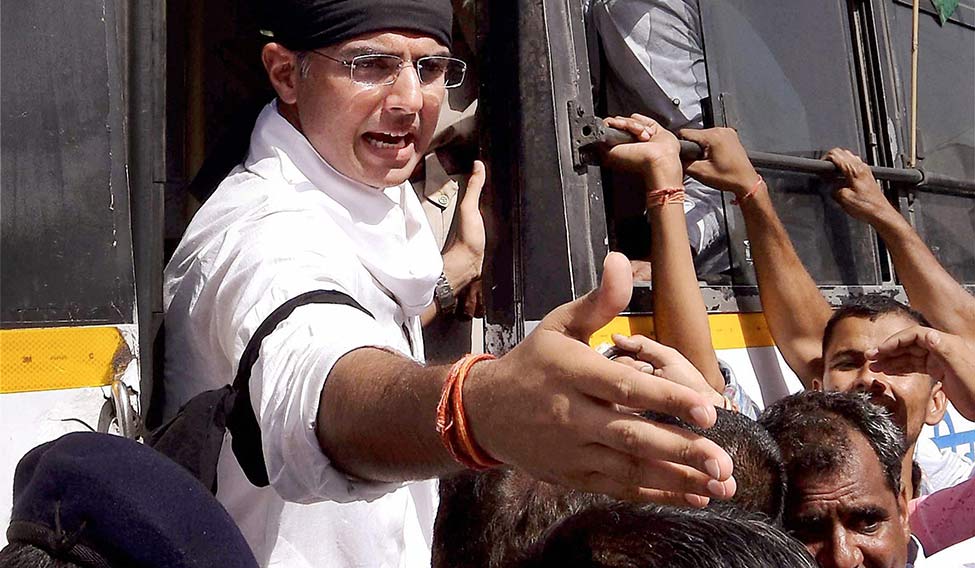 Spirited fight: Rajasthan Congress chief Sachin Pilot remains the party’s best hope among election-bound states in 2018 | PTI
Spirited fight: Rajasthan Congress chief Sachin Pilot remains the party’s best hope among election-bound states in 2018 | PTI
The opposition had staged protests against demonetisation earlier, but did not go all out against the move since the feedback was that the people were convinced that it would rid the system of black money. At a meeting of the opposition parties, the DMK suggested that November 8, the first anniversary of demonetisation, be observed as ‘black day’, and the idea was accepted unanimously. Protests were held, and the government was charged with destroying the country’s economy, breaking the back of small- and medium-scale industries, and rendering millions jobless, first through its decision to demonetise, and then by implementing GST.
Taking over the reins of the Congress, Rahul is fashioning himself as Modi’s main political opponent. He is not shying away from taking on the prime minister directly, has campaigned against him in his home state of Gujarat, and his speeches seem to be finding resonance among the public.
The timing of Rahul’s ascendency is crucial. It comes at a time when the Modi government is entering the final phase of its term, and will have a lot of answering to do regarding the election promises made in 2014.
There is already talk of Rahul being the prime ministerial candidate of the Congress for the Lok Sabha elections in 2019. He has declared that he is ready for any role that his party would want him to take up. Congress leaders talk about the next general elections becoming a Modi versus Rahul contest.
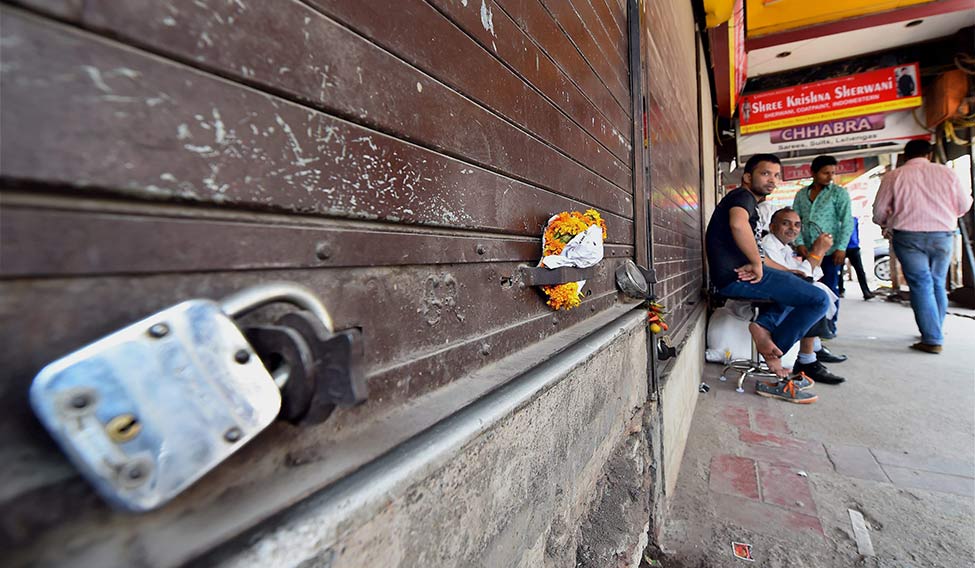 Locked out: A clothes market in New Delhi remains shut during a bandh called against GST implementation | PTI
Locked out: A clothes market in New Delhi remains shut during a bandh called against GST implementation | PTI
Before the Lok Sabha elections, four major states—Karnataka, Madhya Pradesh, Chhattisgarh and Rajasthan—are going to polls next year. These states will see a direct fight between the Congress and the BJP. The results of these elections will set the tone for the Lok Sabha polls.
Rahul’s stature as a leader will depend on his party’s performances in these elections. However, there is huge anti-incumbency against the Siddaramaiah government in Karnataka, the only large state besides Punjab where the party is in power. The Congress lost the Hindi heartland of Madhya Pradesh and Chhattisgarh to the BJP 15 years ago, and has failed to wrest them back. The party is yet to present a credible face to take on chief ministers Shivraj Singh Chouhan and Raman Singh. The only election-going state where it appears to have a good chance is Rajasthan, where the young Pradesh Congress Committee chief Sachin Pilot has been carrying out a vigorous campaign against the Vasundhara Raje government.
When it comes to getting the opposition parties together, the Congress appears willing to downplay its leadership and is amenable to the idea of the other parties hogging the limelight. This becomes necessary for the Congress to build an alliance to take on Modi. In 2004, it was the coalition of regional parties stitched together by Sonia Gandhi that is credited for defeating the Atal Bihari Vajpayee government.
Sonia’s continued presence as a binding factor for opposition parties will be required even though she has handed over the reins of the Congress to Rahul. It was she who got the opposition together for the president and vice president elections.
While there may be unanimity in the opposition on issues against Modi, they are not yet comfortable to appear as a bloc. This was evident in the meeting which took place to decide the modalities of protest against demonetisation on November 8. While there was agreement on holding nationwide protests, the parties, which are primarily state parties, decided to have their own programmes in their states.
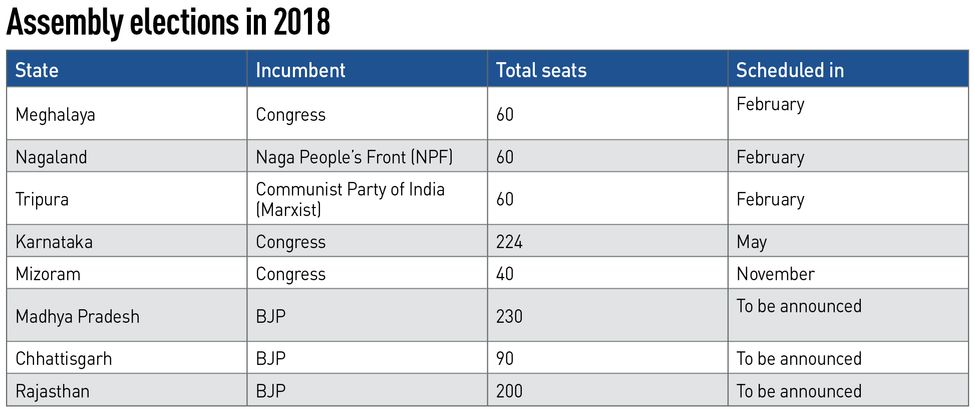
Also, as elections get closer, the competing claims of the regional players on who the tallest among them is, could prove to be a hurdle in the task of putting together an alliance. Each party is talking about how they have an important role to play in halting Modi’s victory march in their respective states. If Trinamool Congress supremo Mamata Banerjee projects herself as Modi’s nemesis in West Bengal, the DMK would claim that it is keeping Modi at bay in Tamil Nadu. Even in Congress-ruled states, local leaders name the chief ministers as Modi’s challengers, such as Capt Amarinder Singh in Punjab.
Modi’s biggest strength—his popularity—remains intact. But, the opposition has been trying to chip away at his image, talking about how he has ‘failed’ to fulfil his promises. It has also attacked his anti-corruption credentials, saying how his ‘Na khaoonga, na khane doonga’ (I will neither be corrupt, nor allow others to be corrupt) slogan has not been adhered to. Modi has been accused of favouring a handful of industrialists at the cost of the public exchequer, such as in the deal finalised for purchase of the French fighter aircraft Rafale. The opposition has also attacked the prime minister over the commodity business of BJP president Amit Shah’s son, Jay.
It is doubtful how successful this campaign would be, given the opposition’s own corruption legacy. Also, Modi, a firm believer in disruption, can be trusted to have more such plans up his sleeve, which he would unveil as he enters the last lap of his term.
The pitch queers and it is no longer so much of an uneven game, setting the stage for an exciting contest.
